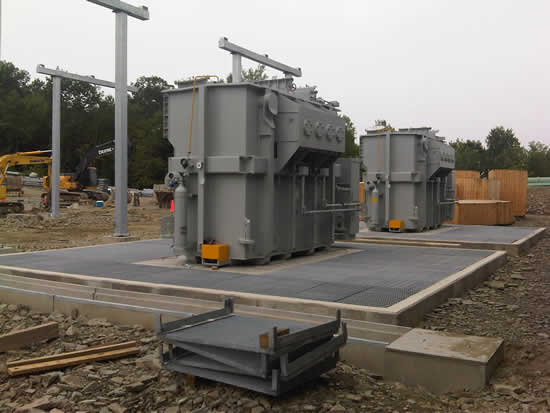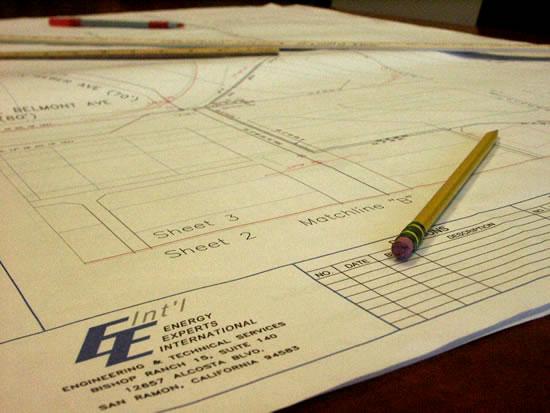DESIGN AND ENGINEERING SERVICES

EEI possess a core team of experts with years of experience in all facets of electric power facilities design. EEI ensures that your company’s systems are designed to focus on reliability and safety, meet performance requirements, satisfy public and environmental concerns, and include flexibility for future modifications and upgrades. Whether your company is installing a new system or upgrading existing facilities, EEI’s design ensures minimizing your design costs, while not compromising the reliability of the system.
EEI offers a range of engineering services to support electric power system operations for transmission, substation, and distribution functions and ensure that our clients meet North American Electric Reliability Corporation (NERC) compliance goals. We can provide our support and level of expertise at all levels from rural cooperatives to multi-state generation and transmission entities, as well as independent power producers. EEI also provides engineering consulting services for the maintenance and operation of all types of electric facilities.
The flexibility of EEI’s engineers allows us to seamlessly integrate into our clients’ processes and accelerate production to meet high demand while also delivering EEI’s brand of high quality.
Electric Service Reliability Management
Although, there have been some major electric transmission outages in the United States, the majority of customer outages occur on the distribution system. According to the Electric Power Research Institute, outage costs to society amounts to $119 billion annually.
Traditional assessments, such as tracking the Outage Indices (i.e., SAIFI, SAIDI, CAIDI and MAIFI) remain key indicators for assessing trends. Today’s distribution grid is taking on numerous challenges spurred by the growth in the renewable sector generation. EEI can assist in providing an assessment that takes into consideration the challenges that must be dealt with as solar arrays and other non-traditional generation sources are interconnected with the distribution system. These external influences are beginning to have a significant effect on the distribution system. In California, electric utilities recently submitted a Distributed Resources Plan to the California Public Utilities Commission (CPUC) to upgrade its grid to incorporate “smart” technologies that will allow the distribution feeder to take on the growing number of solar generation connections.
Sectionalizing line segments with reclosers are no longer as straight forward as it once was. EEI can assist in the planning, assessment and counsel for developing an optimum grid. Many utilities are using Smart technologies to cope with maintaining system stability and service reliability at the same time. Good feeder designs will need to consider other factors for an optimum design. We can help analyze and develop the best solutions for today’s very complex and complicated grid.
Transmission and Substation Design & Engineering
We provide design services to support substation and switchyard projects, ranging from small facility additions to major 500 kV switchyards and generation interconnect stations. EEI will develop the conceptual design, prepare the physical/structural designs, electrical design, equipment specification and the relaying/communication design.
Areas of expertise:
- Bus arrangement schemes (radial, ring, modified ring, paired element, main & transfer)
- Application of phase-shifting transformers
- Application of capacitor banks (EHV series, multi-stage back-to-back shunt)
- Energy storage systems
- System protection philosophy
Distribution Design & Engineering
EEI has been involved in major efforts such as utility poles replacements, numbering over 7,000 poles, numerous distribution capacity and reliability enhancement programs, High Speed Rail, and Fiber Optic communications designs. In addition to these types of engineering projects, we provide applicant design, energy services, and engineering services for residential, commercial, industrial, and agricultural customers.
EEI’s ability to design, estimate and engineer projects with our general contractors license enables us to provide turnkey solutions for our clients.

Some of the largest projects EEI has supported include:
Utility Pole Replacement
EEI has designed the replacement of over 7,000 utility poles including all aspects of the design and job estimates. We oversee these jobs from beginning to end including:
- on-site visits for taking accurate measurements, providing construction advice from our seasoned linemen, and meeting with customers to resolve their concerns.
- producing accurate construction drawings
- creating pole loading calculations using industry standard tools.
- material and labor estimates.
- determining and applying for required encroachment, railroad, and highway permits required for construction.
- design incorporating communication and other attached facilities.
- providing post design support for the construction crews.
Our designs are always in compliance with our client’s design standards as well as regulatory requirements.

High Speed Rail
Energy Experts International is also working with clients to help create design infrastructure for the high-profile California High Speed Rail project.
The California High-Speed Rail Authority, created by the California State Legislature, is held responsible for the High Speed Rail project. The state has been evaluating the potential and need for a high-speed rail for several decades, and it became more evident of the necessity in the mid-1990s with California’s growing population.
This high-speed rail, when it goes live by estimated year of 2029, “will run from San Francisco to the Los Angeles basin in under three hours at speeds capable of over 200 miles per hour” and “eventually extend to Sacramento and San Diego, totaling 800 miles with up to 24 stations,” as stated on http://www.hsr.ca.gov. This project is being funded through a voter-approved state bond, federal funding awards, and others.
EEI is an engineering contractor supporting the state’s General Contractor for the project. We are designing the relocation of overhead and underground distribution facilities, as well as the natural gas distribution pipelines that are in conflict with the proposed construction of the High Speed Rail system.
Additional Support:
- Transmission system planning support
- Distribution planning & analysis
- Limited system and regional load flow studies
- System protection support
- Service reliability analysis and recommendations
- Project management
- System planning
- Permitting
- Engineering standards development
- Engineering audits
- Storm assessments, estimating and inspections
